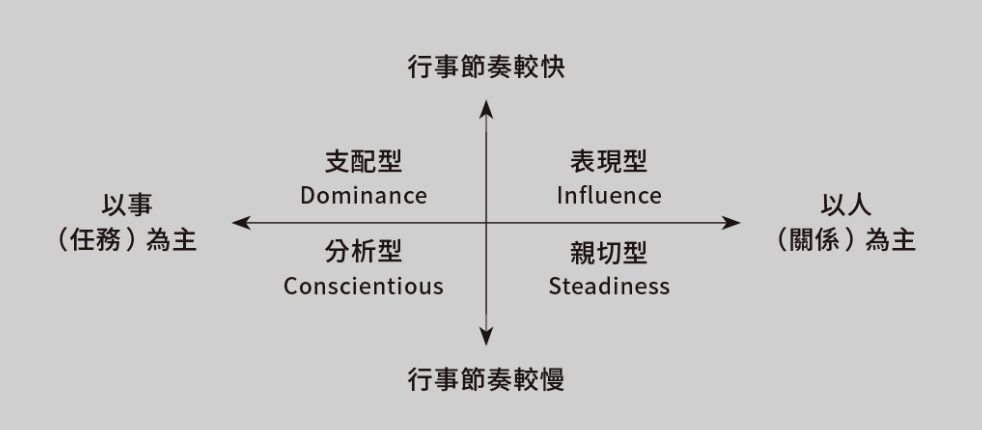|
讀書會裡有位明德國小的孩子,說這本書他看了十三遍,我笑了。覺得孩子真是可愛,這樣著迷的程度,真的是活靈活現的呈現了愛不釋手。孩子說,他下課看,找到空擋就看。大概所有的心思都在角色的悲歡離合裡了。
看了前幾頁的人物介紹以及地圖,老實說這些並沒有特別吸引我。等著書一開始,拾參和他夥伴們的語言生動的呈現了北地曠野孩子的生活與氣慨,我開始佩服作者的功力。等到相關人物一個個登場,我開始感受到這個故事在時間軸上鋪陳三位一體的禪學抑或是道學。 最後一章,真的讓我淚流不止。一個十三歲的孩子,竟得領悟這樣的人生道理,做出那樣的選擇,實在令人心碎。父母輩的業,為什麼要孩子來承擔?累世的業又要何時才會停止?什麼是開悟?何時又是個頭? 面對人性之惡,拾參與雅庫最後的一句「生生世世不再為人」,很是令人震撼。這樣對人的鄙視與反叛,讓西遊記裡的老孫,更加迷人了! 資深AI 應用人程世嘉以麻瓜也可以懂的語言爲一般民眾提供了許多破解AI的迷思與實際的應對策略。這兩個月他也頻繁的進行宣傳,跟幾位知名的主持人進行了很精彩的對談。(有這些不同領域的對談真的很拓展思維)
書裡面兩個我認為最關鍵的核心思想是:
這些思維是對未知恐懼的解放,對於進入未來有個堅實的立足點。 感覺振奮人心 ! References:
談及向上管理的書不少,網路上也有很多討論的短文。我不太喜歡厚黑學一類目的性太強的教戰守則。畢竟爾虞我詐的人生太勞心,我可能很難快活長命。 張瀞仁的這本書讀起來非常舒服,是一種純粹乾淨的舒服。沒有壞念想,只有一份同理心。每個人在對自己的角色任務都有不同的解讀,也因爲個性、文化的不同有各式各樣的詮釋與行動。有些人的表達方式很隱晦,只能不斷試誤飲恨;也有些人表達明快容易配合。書裡引用Dr. William Marston 的 DISC 分類法,其實是ㄧ個簡易應對指南,容易上手。仔細思考一下,我曾經或是現在¥的主管們,也好像真的能夠用這分類法排排坐好!(圖摘自p173) 總的來說,書裡用了 Jennifer Kahnweiler 的話總結了此篇:「你的目標就是要幫你的主管達成目標,而他的工作就是要協助他的主管目標。」說的簡單,但操作起來的困難就是「我不認同」跟「我不想」。結果人生最大的敵人還是自己。
跟著美國老闆工作的那幾年,真真切切的領悟到了宏觀和目標。大部分的同仁都是以這樣的理念和想法彼此照應著,後宮那些個你爭我奪的套路真的是玩不起來,頻率對不上的都是悄然離去。在那樣的磁場裡真的少聽到「我不想」、「我不要」或是「為什麽是我」,更多的時侯是感謝與「我們」。 想念啊! 張瀞仁這本書雖然是寫給內向者的工作指引,但老實說對已在職場上的人是一種提醒,對於大學生或是初出社會的青年這樣ㄧ步步手把手解釋引導,真是佛心來著,我尤其推薦書裡解釋 Small Talk 的篇章。 對於還在英語學習階段,即將邁入雙語或是英語教學的學生們,這真的是寶典!哈哈哈哈!
Small talk, 對外國的孩子可能相當習以爲常,但對於臺灣的孩子(起碼對我來說),尤其是要自在的以英語進行small talk ,的確是ㄧ個需要學習的技能。 因爲是外語,平常沒在使用的話,ㄧ下子要口若懸河,看起來自在,無論你是外向或是內向我想都不容易。所以如書中所言,準備是重點,曾練習過的才是自己的。也因爲是聊天,「讓聽者愉悅地接受才是溝通的重點。其實,被討厭與讓人印象深刻只有一線之隔…。」 網路上說明亞洲大媽或大伯聊天方式令人哭笑不得的梗已太多:ㄧ定要負面評論一下你的外表、容裝、穿著,然后給個建議覺得為你好;一定要調查一下你的身家背景,還是要給個建議,告訴你如何可以更好(我有想知道嗎?);本來以爲,時至今日這樣的情形已經不多,喔不,上週參加研習還真有個教師夥伴活靈活現的又在我身邊演一回。 (對,我就想這樣穿,不行嗎?) 如果,我們平日溝通的方式僅是向師長、家人抑或是某些酸言酸語的直播主取經,那真的要好好學習ㄧ回何為讓聽者愉悅接受的小閒聊。平等的尊重,我們似乎還有努力的空間。
真實的經驗是,我也是個太小心謹慎的人。第一次的國外小旅行,當地朋友開心聊完自己,回頭問了我: So, what’ your story? 我驚嚇的當場逃走! If I can do it again, I would definitely have lots to share and say about me, my country and my great experience in that trip. 🥹 A colleague told me she started taking online English lessons to brush up her English skills. Kinda interesting and I signed up one. For one, I want to see how experienced teachers conduct a language class with a small group of people. I also want to practice the language on topics I am not that familiar with.
The first lesson was great. The teacher divided the time into two sessions: 1) conversation-how to really take turns to build the content on others’ response 2) discussion-read aloud a short paragraph, explain the vocabulary, trouble-shoot and share ideas. I truly enjoyed the first part! Gosh! Having a proper conversation without asking questions is so hard for me! It really takes practice. And studying the vocabulary words, ChatGPT really comes in handy. Some of the words are difficult to grasp without enough contexts. I asked ChatGPT to give me 10 sentences for each words. Solid and well-rounded. On a side-note, I scheduled the lesson at noon time, for 80 minutes. It was very refreshing and better than a nap, at least for me. When researching ideas of how teachers successfully build a learner-centered community, I found this gem on Edutopia. Mr. Chris Optiz speaks about his philosophy and strategies to engage learners in the math class.
I love how he describes learning as a social behavior. It is impossible for one teacher to teach students with a wide range of social or academic abilities. Therefore teaching them how to support each other, offer and accept help is more important. When I first think about SEL, I googled and saw sets of curricula online. It feels like a subject that requires additional time and effort to work it out in the classroom. Obviously, for me it is impossible because I simply do no have enough time to cover that on top of the materials/textbook I already have to cover. Then, I wonder when and how did education or my own teaching come to this end - how to efficiently transmitting content knowledge to the children. So here I take a different turn. And thanks to ideas and video clips. Edutopia- How to teach Math as a social activity Here Mr. Opitz showcased his ideas in action. Cooperative Learning Fits into Caculation Here Mr. Opitz shared his overall plans and step-by-step guide. From the podcast episode, this is a beautiful quote by The two, “seeing us as human beings and as brothers and sisters is to recognize that we are all capable of being good or bad; We cannot be fixed but we can always be better. “
I truly enjoyed the conversation between these two great individuals. Their words and actions about love, community and finding common grounds amongst US are uplifting and empowering. Although Chloe spoke from the concerns of racism, her central tone is to encourage all to face the demon inside. Instead of othering people, recognizing those needs and wants that we dislike or loathe are not unique but social-emotional complexity existing within every single one of us. As inner psychology lays out: what we do not like is a projection of ourselves. Separation is an illusion. It is always We and Us. To be WE is not an easy task. Communications and negotiations speaks to from and to our egos. It triggers anger, annoyance, disgust, superiority…and feelings that defines us at that particular moment. Oftentimes, it hurts. Looking within takes courage because it asks us to confront our own ego. One who chooses to go through that path could experience unpleasant interactions with our own ego. Indeed, as human beings I’m capable of doing all good and bad. I choose, I mourn, I learn and I choose again. such a lifetime hard work. It can be fun if we simply let it. Finally finished the book - prolly the best of the best over these years, in my opinion.
This book started with a series of the author’s personal struggles to reclaim his own concentration but ended up uncovering bigger psychological and social problems of humanity - a fascinating compilation of his search for truth and genuine compassion for our world. After interviewing researchers and experts, Hari came to a conclusion that our losing of attention or focus can be attributed to a variety of causes which inevitably are resulted from our economic model or how we view prosperity. Citing from different sources, Hari explains that our prosperity is built on our ability to consume. More and faster is the key to success. At the psychological level, our IT business flourished by creating technology tools that manipulates human minds, which then cripples our attention capacity and flow process. At a societal level the need to pursue success creates stress to our day-to-day life including a malfunctioned medical system and nutrition industry. Some of the interesting perspectives Hari cited are the causes of ADHD, where he took the most blames from book reviews. As a teacher, I couldn’t stop turning the pages when he discussed the causes of ADHD. The knowledge we have about ADHD or ADD is too limited, and as the research reveal, some of these experiments could be flawed methodologically and not long term. It is important to keep in mind that environments could be one of the reasons that attributed to children’s hyperactive behaviors. Beautifully said, quotes from Chloe and Simon, “seeing us as human beings and as brothers and sisters is to recognize that we are all capable of being good or bad; We cannot be fixed but we can always be better. “
I truly enjoyed this episode with these two great individuals. Their words and actions about love, community and finding common grounds amongst US are uplifting and empowering. Theory of Enchantment - A bit of Optimism Although Chloe spoke from the concerns of racism, her central tone is to encourage all to face the demon inside. Instead of othering people, recognizing those needs and wants that we dislike or loathe are not unique but social-emotional complexity existing within every single one of us. As inner psychology lays out: what we do not like is a projection of ourselves. Separation is an illusion. It is always We and Us. To be WE is not an easy task. Communications and negotiations speaks to from and to our egos. It triggers anger, annoyance, disgust, superiority…and feelings that defines us at that particular moment. Oftentimes, it hurts. Looking within takes courage because it asks us to confront our own ego. One who chooses to go through that path could experience unpleasant interactions with our own ego. Indeed, as human beings I’m capable of doing all good and bad. I choose, I mourn, I learn and I choose again. such a lifetime hard work. It can be fun if we simply let it. 1/22 晚間參加了李宗憲教授在臺北閱樂書店舉辦的「隱性反骨」新書會,楊斯棓醫師擔任講書與談人。從沒有參加過這樣的活動,非常好奇活動將會如何地進行,兩位之前有何種的互動。
整場的活動楊醫師作簡短的開場之後,就由宗憲教授介紹他自己的人生,接著宗憲教授回答事先蒐集五個讀者給宗憲教授的問題。非常喜歡楊醫師的開場與對李教授的回應(連宗憲教授的八字,楊醫師也能接上梗鋪陳)。無論是時間的掌控,以及在忠憲教授的短介中搭橋都讓人見識到、感受到楊醫師事前準備用心。這樣的用心對於坐在台下的我是滿滿的感動與被尊重。總是在楊醫師的臉書上讀到楊醫師選擇禮物的細心與用心,今晚當楊醫師在宗憲教授分享他的讀書歷程後立刻宣布心得小禮物時,真的被震撼到了。沒有在場無法感受那樣的喜悅與驚喜,沒有聽到宗憲教授的分享不能體會這一份禮物背後加乘的情意。 宗憲教授在回答提問時的每一段平實語言中,都包含者滿滿的哲理。這樣的哲理並不是只從不同典籍中摘取出來的詞彙與精美文句,而是將自己的人生淬煉過後,以經典相輔,藉由這些經典,沒有讀過宗憲教授新書的聽友們被邀請去從更寬廣、不同的角度、時空中體會到詞語中蘊含的人生;閱讀過的聽友們則更能夠產生共鳴。五個提問中,以下兩則,最令我印象深刻。 1. 在對孩子的教育中,宗憲教授不只一次地提到,每個人都是不同的個體,都是美麗的人生,都必須看見為自己決定的結果,為它負責。因為人生旅途中每一個人做的每一個決定,背後成因都是內在、外在無數條件、因素相乘的結果,這個結果反映了當下的自己,也因此沒有一個人能夠完全的複製活出另一個人的人生,因為決定的可能性有無限種。身爲父母,只能支持而不該剝奪這個美麗的歷程,更無法因為成就的高低分別,而去判斷一個人的偉大或成功與否。 「孩子的人生,不該是我們恐懼的延續。」宗憲教授的這段話,深深的打動我的心。我們對偉大與成功的定義,是否源於我們對 「無法獲得金錢、功名 」的恐懼,或是一個人能否徹底發揮實踐自己的潛能;我們對他人或孩子們給出的意見,是否是我們個人人生「不能」或「無法」的投射?是否源於我們不相信孩子有實現自己人生的潛能?我們的人生似乎總活在各式各樣的期待中,而長輩希望我們求取金錢、功名這樣的期待,似乎從有意識以來就一直流淌在我們的想法裡。一個不清明,就可能誤以為這是我們人生經驗得出來最好的生命實現方式。 這也讓我重新去思考求學的過程中,「典範」的意義。究竟,何謂典範,我們又要從這個概念中習得什麼?是否複製成功典範、成為典範,才是所謂的「成功」,誰定義的「成功」。「靈魂急轉彎裡」裏,角色22 號在靈魂學校學習的過程,無法承載典範(如德蕾莎修女、林肯)的諄諄教誨、勉強複製典範的失敗是一種無形的壓力。因為無法複製同等的成功,也無法達到眾人的期待。22號最終壓抑、叛逆,失去自信也失去了自己,成為宇宙中的遊蕩者。 這樣的結果相信不是身為父母、教育者或是比下一代多長幾歲的的我們所樂見的。 或許就如22號,在找到自己的火花-自己對生命的喜悅與熱情,發現何為「我」,才是一種終極的自我實現,也是對自己人生真正的開悟。 2. 在回應「何謂正確的思辨」中,宗憲教授援引毛姆的 『月亮與六便士』與我們探討我們人生何來正確的答案?何謂正確? 如何做選擇?故事中的主人翁放下家庭與日常生活(六便士的生活開支)去追尋理想(月亮)錯了嗎?不負責任了嗎?倘若留在家庭中而壓抑自己的想望的確是對家人負責,但這樣的選擇又對自己的人生負責了嗎?這樣的選擇,會令人快樂嗎? 宗憲教授以自己的家庭為例,因為從小飽嘗貧窮之苦、對人情冷暖,看高不看低的憤慨,在父母親的人生中看見自己不想要的軌跡,檢視自己不想要的人生,並有勇氣拒絕父母親在金錢上的請託。 若想實現人生,就必須明白自己不想要的人生為何,也必須能承擔(後果、批評、情感的羈絆),能負責(無論好壞,心中喜悅)。這個選擇需要勇氣,而這樣的勇氣是與生俱來的嗎?又是可以培養的嗎?為什麼有些人生來似乎就信心勇氣滿滿,即便經歷挫折,卻仍能愈挫愈勇? 引此,我問了宗憲教授:「如果讓你可以不同性別重活一次你的人生,你想要嗎?」宗憲教授如此回答: 這個問題我最直覺的答案就是不要,我非常明白這個世界男女之間不平等的現象。女人在生物特徵上具有子宮,在大自然的設計當中,負擔繁衍下一代重大的責任,先天上,體力一般也較男性柔弱(我們家的當然例外)。在農業時代,以人力為最主要的生產機器,在這個階段男女之間的差異,在社會上扮演的角色而有所不同。但工業革命之後,現在大家都普遍能夠接受男女之間,其實不管在社會生產力,或是能夠擔任的工作,基本上沒有太大的差別。 在我生活的周遭,我的家人和朋友有的沒有結婚,有的有結婚。結婚的有幸福的也有不幸的;沒有結婚的有幸福的也有不幸的。結婚的有離婚的,或失去伴侶的。通常面臨到這樣的狀況的朋友,女性不會再婚,男性卻往往很快就會有女朋友或再婚。 一般來說,在婚姻市場,男生成就越高的,身價越好,年齡沒有太大的關係。女性成就越高的,身價越不好,年齡有很大的關係。尤其職場上,男生結婚幾乎不受影響,甚至有更大的幫助,女生可是完全不一樣。更不用講那些世界各國 Me Too的事件。 我有兩個女兒,為人父母的首先就是希望她們夠平安健康的長大。如果運氣好的話,希望她們能夠幸福。人都一定會孤獨,在寂寞情況之下,需要有人陪伴。但這不應該成為逃避尋找自我的藉口,班內迪克.威爾斯在寂寞的終站講到:不加選擇地隨便和別人在一起並不是寂寞的解藥。寂寞的解藥是安全感。 工作、生活和家庭往往都處於弱勢的女性,常常被雙重標準制約,其實有很多女性一輩子深受其害卻從未覺醒。我覺得自己基本上不是一個妥協的人,只有訓練自己能夠勇敢孤獨,不需要依附別人的關係,這樣才能夠找到真正的幸福。 如果能夠擁有這種對社會觀察和分析思考的能力,針對這個問題,我願意用女性的身分重新活一次人生。但我懷疑自己能夠以女性的身分,得到同樣的發展,拿到這一生中所擁有的機會、足夠的啟發和自信,勇敢選擇自己的人生。 年前,能夠聽到這麼棒的分享。真是令人心情大悅! |
Winnie ChiuAn enthusiastic ELT/CLIL teacher, passionate educator, researcher, teacher trainer, Apple Teacher. Seesaw ambassador and curriculum developer. Archives
July 2024
Categories
All
|
Proudly powered by Weebly











 RSS Feed
RSS Feed